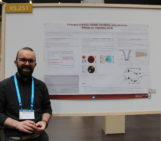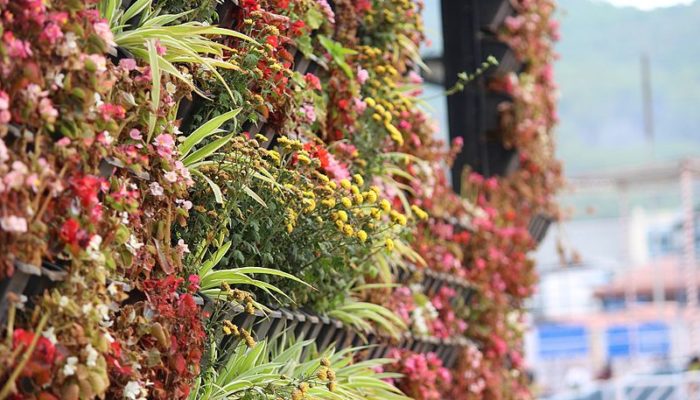
Over half the world’s population lives in cities. Many a metropolis rises high above carpets of concrete and tarmac, vibrant, bustling, and prosperous. But this urban environment comes with many a problem. From poor air quality to hazardous temperatures, there are several dangers present in urban environments. Scientists speaking at the European Geosciences Union General Assembly in Vienna earlier this year have been testing designs that could change cityscapes and tackle the challenges of urban living. The solution, it seems, is making these areas greener.
As well as making cities more aesthetically pleasing, more vegetated urban environments come with a wealth of benefits, including improving wellbeing, absorbing noise and creating new habitats. With horizontal space at a premium, scientists and engineers are looking to city walls to make environments greener, exploring how growing vertical gardens can help address the challenges associated with urban environments.
“We should have much more vegetation than we currently have. That’s the source of a number of problems,” says Fulvio Boano an environmental engineer at Politecnico di Torino, Torino, Italy.
The problems include a phenomenon known as the urban heat island effect. Cities are typically warmer than the surrounding countryside. Dense networks of dark roads and pavements absorb more solar radiation than natural vegetation, and high-rise buildings can also interfere with natural cooling effects, like wind. Combined, these urban features make cities warmer than their surroundings. The effect is more pronounced at night, leaving urban areas several degrees warmer than their suburban counterparts, resulting in an urban heat island.
The difference may only be a few degrees, but the impact that this change can have is no small matter, especially when combined with a heatwave. For vulnerable members of the population, including those over the age of 65, deaths due to heat stress are much higher when night-time temperatures exceed 25 °C indoors. Of course, air conditioning can help bring room temperature down, but there may be more sustainable solutions out there. Thomas Nehls, a researcher at Technical University Berlin, Germany, suggests vertical gardens are among them. He presented his recent research at the Assembly in April.
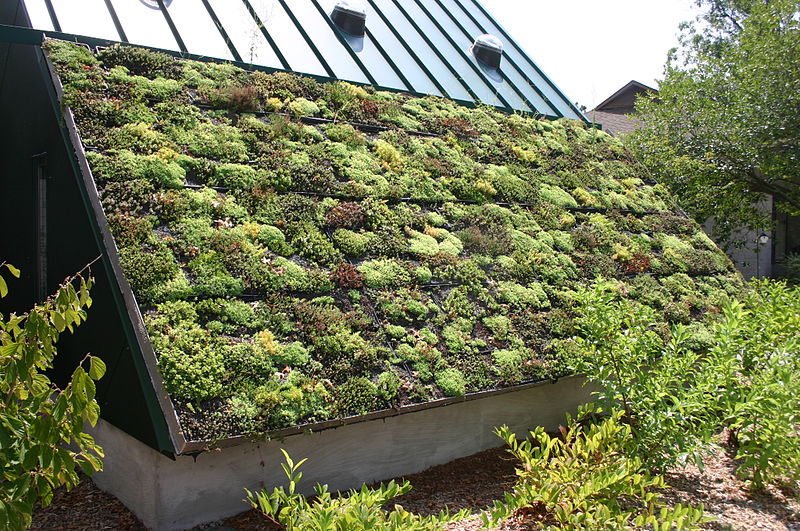
Roof and wall structures are ideal for urban greening, but with much more wall space going, vertical gardens could well be the future. Credit: Ryan Somma
Planting building walls with greenery provides shade, reducing the solar radiation reaching the building and the way plants uptake and lose water also helps remove heat. Between a bare wall and a green one, the difference in temperature can be as much as 16 °C on a hot summer’s day and – over a large area – these vertical gardens could help cities stay cooler. “For indoor night-time heat stress, every single wall especially south, south-west and west oriented walls will reduce the heat stress inside the buildings,” explains Nehls, whose interest in urban greening started with ideas around how to handle rainwater in cities.
“Water needs to get evaporated into urban atmospheres instead of being drained to the sewers and, finally, rivers or surface waters,” asserts Nehls. Vertical gardens slow down water movement, allowing it to be used by plants, and evaporated back into the atmosphere, rather than racing down a gutter. It means the gardens can be watered sustainably too.
Ongoing research at the Department of Land, Environment and Infrastructure Engineering (DIATI) in Torino, Italy, goes one step further – exploring whether vertical gardens can clean up domestic wastewater too.
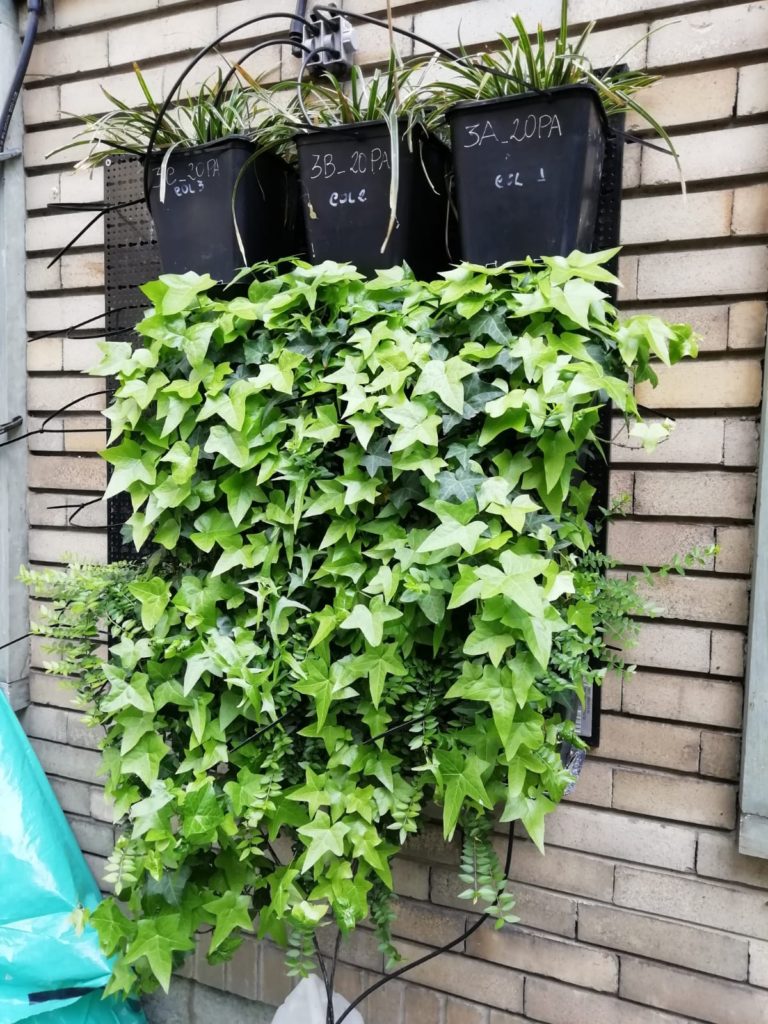
A tiny vertical garden in testing at the Department of Land, Environment and Infrastructure Engineering at Politecnico di Torino. Credit: Alice Caruso
The average person uses 200-250 litres of water per day, and most of this ends up as wastewater, which usually requires energy to treat and make reusable. But, with vertical gardens, we can do the same with much less energy and fewer resources.
The idea is simple, by covering building walls with layers of plants, you get the many benefits of urban greening, and your very own wastewater treatment facility.
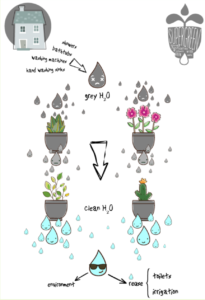
How domestic wastewater purification works. Credit: Alice Caruso
The design is currently being tested on university buildings at Politecnico di Torino, and is capable of cleaning all domestic wastewater except sewage. With roughly 100 litres of this produced daily per person, the technology could be a big step towards meeting water treatment demands. Scaling up the technology is the next challenge, including working out how the vertical wall should be built to meet the needs of a family.
Domestic wastewater provides plants with the water they need and, as it percolates through the system, the water is slowly cleaned and stripped of many ‘undesirables.’ The process removes many common pathogens, present in concentrations orders of magnitude lower than the original wastewater. Microbes in the soil and roots are thought to do most of the work, but exactly how they purify the water is not yet known. Together, the plants and microorganisms remove nutrients and contaminants.
“We need energy to treat water, we need energy to make water drinkable and we need energy to pump it into houses. This kind of application is going to reduce all that,” Boano explains.
There may be other benefits too, “green surfaces in your direct surroundings will keep you calm, reduce blood pressure and other symptoms of stress,” suggests Nehls, emphasising that while the benefits to wellbeing aren’t fully known, there’s a lot of potential.
For the scientists working on the future of our cities, the reasons for making them greener couldn’t be clearer: “[we want] to make the environment more comfortable for people and our children,” says Politecnico di Torino’s Alice Caruso, who presented the work at the Assembly.
By Sara Mynott, EGU Press Assistant




